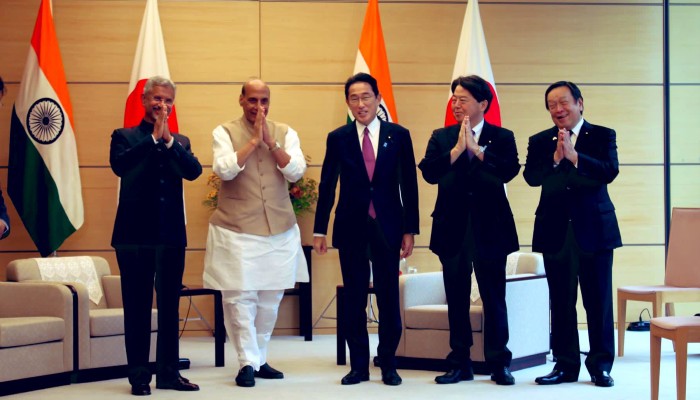In an article published on September 8, Bloomberg said Prime Minister Narendra Modi’s push to boost domestic manufacturing of defence systems is leaving India vulnerable to persistent threat from China and Pakistan
The article, full of unverified facts and innuendoes, was published by Bloomberg a week after India launched its first indigenous aircraft carrier INS Vikrant, seen as a significant achievement of India’s self-reliance programme. In the same week, India’s Defence Research Development Organisation, successfully completed six flight tests of the Quick Reaction Surface-to-Air Missile (QRSAM) system from the Integrated Test Range site in Chandipur in Odisha.
Ready for induction into the Army, the QRSAM is equipped with state-of-the-art guidance and control algorithms including warhead chain. It can operate on the move with search and track capability and fire on short halt. The author of the Bloomberg story: “India is Running Out of Weapons to Deter China Due to Modi Order” has clearly ignored that PM Modi headed Cabinet Committee on Security on September 3 had cleared the development of Light Combat Aircraft (LCA)-Mk2. The roll out of LCA-Mk2 is planned by 2024 and the process of flight testing will be completed by 2027.
The LCA-Mk2 will be a much more capable aircraft than the LCA-Mk IA that is scheduled to be delivered to the IAF by early 2024. Besides, work is on to develop 5th generation stealth aircraft, AMCA. The Indian Army has already inducted indigenously developed swarm drones into its mechanised forces. It is equipped with cutting-edge technology that can identify targets using artificial intelligence-driven software. In fact, India wants to be second to none in modernising its armed forces.
The Indian Navy is also strengthening its maritime dominance in the Indian Ocean through indigenisation programme. While thoughts are given for the launch of the third indigenous aircraft carrier, India is quietly stepping up its military capabilities through nuclear missile submarines. The third Arihant class nuclear submarine, as per Jane’s Defence Weekly, was launched by India on November 23 last year.
Earlier the Ministry of Defence, while pushing the country’s self-reliance programme, signed more than 180 contracts with the Indian industry between June 2014 and December 2019, worth approximately $25.8 billion. The Bloomberg author seems to have deliberately overlooked such developments in his drive to belittle the Indian government’s efforts to make the country’s defence forces modern, effective, and strong. For the year 2022-23, the government earmarked Rs 5.25 lakh crore for defence sector, increasing the allocation to 9.82 percent from the previous year.
It should not be forgotten that India under its ‘Defence Acquisition Policy-2020’, provisioned increasing FDI in defence to 74 percent and prioritized the capital procurement of IDDM (Indigenously Designed, Developed, and Manufactured) Defence Arms and Equipment to 60 percent.
Overall, credit goes to the country’s self-reliance programme, defence imports have dipped 21 percent in the last five years, while exports have hit a massive Rs 13,000 crore, enabling the country’s drive from being one of the world’s biggest weapons importers to an exporter of defence equipment.
In January this year, India signed a $375 million deal with the Philippines for Brahmos, the 290-km range supersonic missile. India has offered to sell 18 LCA to Malaysia. Significantly, the US, Australia, Argentina, Egypt, Indonesia, and Philippines have also shown their interest in purchasing LCA from India.
In view of interests shown by different countries in India made military hardware, it is hard to overlook the country’s ambition to become a major defence exporter of the world in the next few years. India has aimed to export Rs 35,000 crore worth of defence-related technologies by 2025.











 Contact Us
Contact Us
 Subscribe
Subscribe
 News Letter
News Letter
 Instagram
Instagram Youtube
Youtube